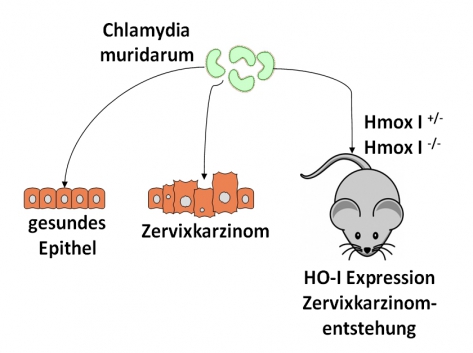Subproject 3:Uterine inflammatory microenvironment after a chlamydia infection as a risk factor for a cervical carcinoma: The role of hemaoxygenesis-1 and therapeutic possibilities in a mouse model.
Experimental Gynecology and Obstetrics: Zenclussen AC
University Women´s Clinic: Costa SD
Infection with Chlamydia trachomatis has been connected to the development of cervical cancer, especially in patients who are also infected with HPV. Chlamydia muridarum represents the murine variant of C. trachomatis and causes cervical dysplasia in the mouse model. We would like to research how much the expression of HO-1 influences the disease’s development. Furthermore, the possibilities of HO-1 as a therapeutic target structure should be more closely investigated.
 |
|
Figure: Planned experiment; Infection with Chlamydia muridarum in HO-1 competent and deficit mice and the development of cervical carcinoma |






